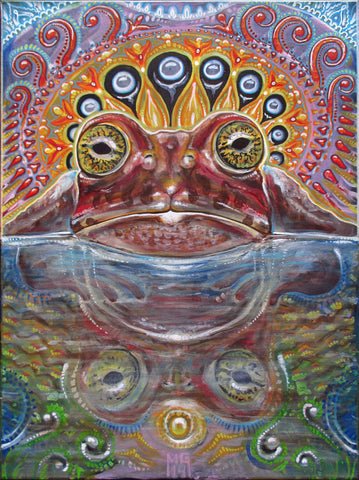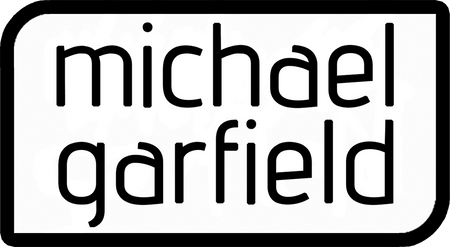
• Posters: signed print on 11"x17" glossy 100 lb. cardstock, shipped in a plastic bag with cardboard backing.
• Giclées: Signed and numbered (series of 25) high quality archival print on canvas. Finished with a colorfast UV gloss varnish, stretched on 3/4" bars, and shipped with hanging hardware.
Original piece painted live with oil & acrylic markers.
"Żabka" is Polish for "little frog." Toads are amazing creatures – ancient, metamorphic, sturdy, adaptable. Their habit of consuming the skin they shed has made them an especially potent image for transformation. The most potent animal toxin comes from a frog (batrachotoxin, from Phyllobates terribilis); the most powerful hallucinogen does as well (5-MeO-DMT, from Bufo alvarius). Amazonian tribes use the secretions of another species (Phyllomedusa bicolor) as a ritual purgative to purify themselves for hunting. (This "kambo" ceremony renders people temporarily and inexplicably immune to the shock of electric eels.)
I used to draw frogs for a living. Working as the scientific illustrator for the Department of Herpetology at the KU Natural History Museum, I stippled the description plates for dozens of new species of frogs my boss, Dr. Rafe Brown, discovered in the Philippines.
The trend continued in grad school, when I was hired by my graduate advisor, Dr. Sean Esbjörn-Hargens, to provide a frog-themed cover illustration for his amazing book Integral Ecology: Uniting Multiple Perspectives on the Natural World (you can see that illustration and learn more at http://
Come to think of it, I've always had a thing for frogs and toads. My first recognition as a writer was for a short story I wrote in the second grade, about talking dart poison frogs. My earliest attempt at an illustrated manuscript was on the life cycle of frogs and toads, the year before. My first detention was for skipping class to hunt for toads in between school buildings, growing up in Florida. (I spent SO much time catching toads and tadpoles as a kid.)
My most enduring shame is the memory of killing a toad by throwing it, before I was old enough to know what death is. That's probably why I defended them so fiercely from bullies in middle school...and why I love that scene in E.T. when Elliott liberates the frogs from his school's bio lab.
My great inspiration Ernst Haeckel, who coined the term "ecology," is also famous for saying that "ontogeny recapitulates phylogeny" – meaning, the development of individual organisms is a kind of re-enactment of their whole evolutionary history. We all start out as single cells, then grow into worm-like creatures, then fish, and so on...humans do this in the womb but frogs and toads go through their transformation out where everyone can see. Perhaps that is part of their enduring mystery and appeal. Certainly it resonates with my own open-studio process as a live painter, letting everyone observe the work unfold in public. This piece in particular marks a turning point for me – the moment when I took paint pen technique into a new dimension of blending and transparencies. A little Alfons Mucha, a little Futurama, with this painting I find myself one turn up the spiral of my lifelong love for these amphibians.
Browse my art on leggings, iPhone cases, pillows, mugs, and many other items:
https://society6.com/michaelgarfield/
